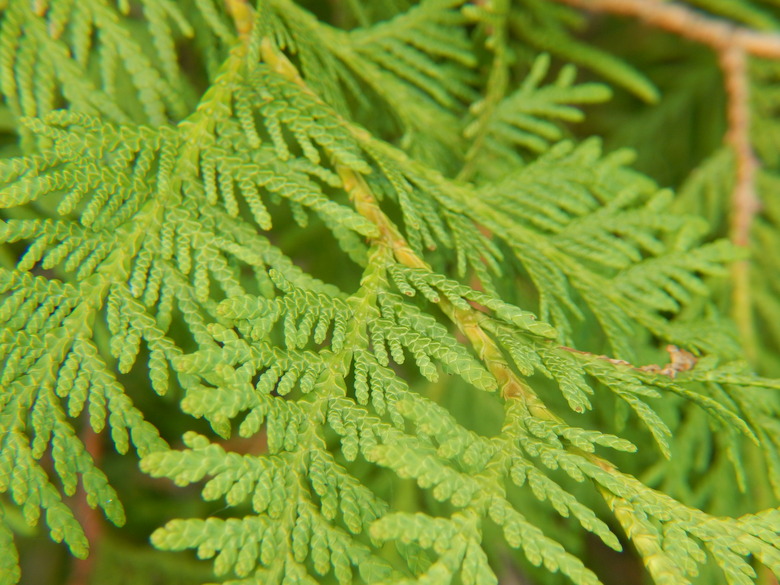White Cedar Tree Facts
The cone-like canopy on this slow-growing evergreen makes a stunning landscape in a yard, park or along a fence line. This is one of many reasons the Eastern white cedar tree (Thuja occidentalis, USDA zones 2-7) is a favorite among builders and arborists.
When young, the white cedar is quite bushy. It is often used to create privacy hedges or boundary bushes. It is also planted in rows to create buffer strips on roadway medians. As the tree matures, it is put to use in a wide range of areas, including use in artisanal furniture and rustic fences.
White Cedar Facts
Native to North America, the Eastern white cedar is part of the Cupressaceae family. The slow-growing evergreen does best in United States Department of Agriculture hardiness zones 2 through 7. It can reach heights of 40 to 60 feet when it reaches full maturity.
The canopy of the white cedar tree can spread 10-15 feet. The branches grow in an upright pyramid shape, giving it a distinct outline that offers a dramatic landscape shape for large gardens.
Uses for the White Cedar Tree
The leaves and oil extracted from the leaves of the Eastern white cedar tree are used as medicine. It is said to contain chemicals that may be able to fight off viruses.
These chemicals have been known to relieve quite a few health issues, including:
- Respiratory tract infections
- Bacterial skin infections
- Occasional cold sores
- Osteoarthritis
- Trigeminal neuralgia
Cedar Wood Facts
The Eastern white cedar wood is cultivated for many reasons. There are some interesting facts about this wood, including:
- The hardwood doesn't tend to swell or shrink, so it does well with paint and glue, making it a preferred wood for artisanal furniture makers and crafters.
- This is the lightest of all commercial woods in the United States.
- The white cedar heartwood is resistant to typical decay and termites, making it a hardy tree that can stand up to many pests in the wild.
- The wood is soft and easy to cut but doesn't hold nails well due to its low mechanical qualities such as the ability to bend.
Uses for White Cedar Wood
The hardwood is used for residential and commercial building efforts, including:
- Poles
- Shingles
- Lumber
- Specialty art projects
- Fencing
- Rustic siding
Growing Conditions for the White Cedar
The white cedar tree seeks out rich, moist and fertile soil to feed its slow-growing branches. It is relatively easy to uproot and transplant. It enjoys the shores of the Great Lakes and cold areas of Maine, where it thrives in pure and mixed stands of trees. Swampy areas are a favorite rooting place for the white cedar to grow.
Humidity needs to be high in order for the white cedar to thrive. While it enjoys a rather moist environment, it can also handle drought conditions for a short period of time.
White Cedar Foliage
The oval leaves have blades that are less than 2 inches long.
In the colder months of winter, the tiny leaves may turn brown. This is fairly common and nothing to worry about. It happens mostly with white cedars growing in cold climates and in trees that are planted as a windbreak and get the full brunt of colder winter winds.
It can get leaf blight, which shows up as brown spots on the leaves as they unfurl in spring. The scorched-looking leaves will drop, but the tree should recover if the leaf blight only affects a quarter or less of the canopy.
Pests That Plague White Cedar
The hardy tree can be susceptible to some pests in rural or city areas. These include:
- Scale insects – These infest the leaves and stems.
- Mites – The leaves may turn a speckled yellow if mites are taking over.
- Bagworm – If the tree has cone-shaped bags hanging from a branch and looks like it is losing significant foliage, these tiny pests may have moved into the tree canopy.
